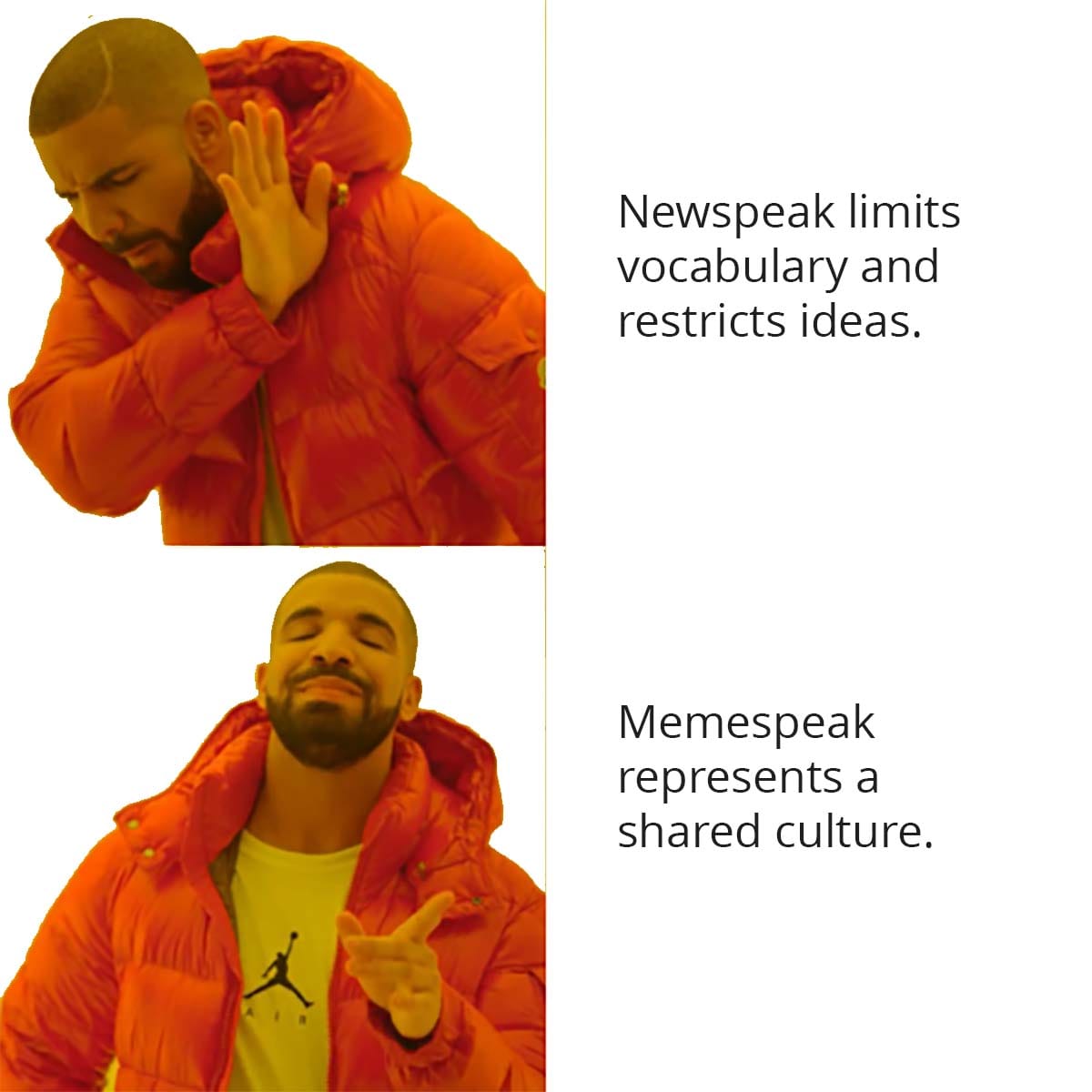Darmok and Jalad at Tanagra Or When Memes Met Metaphors
Explore how "Darmok" from Star Trek: TNG and modern memes both rely on shared cultural references to convey deeper meaning in this thought-provoking article for fans of classic science fiction and culture too.

"Darmok and Jalad at Tanagra." These words echo through one of the most memorable episodes of "Star Trek: The Next Generation."
First aired in 1991, "Darmok" shows how Captain Jean-Luc Picard struggles to communicate with a species known as the Tamarians, whose speech confounds the Enterprise crew.
What begins as a routine encounter soon becomes a crisis when the Tamarian captain, Dathon, transports himself and Picard to a hostile planet. The pair must work together to survive a dangerous beast, but that challenge pales next to the real problem, understanding one another's language.
The phrase "Darmok and Jalad at Tanagra" is central to the episode. As viewers discover, it refers to a legendary tale from Tamarian lore. Two warriors, Darmok and Jalad, met at Tanagra to face a shared enemy and emerge victorious. By invoking that story, Dathon hopes to spark cooperation with Picard —much like the Tamarians' ancestors did in their myths. Their difficulty bridging that linguistic gap resonates with many of us today, especially as new forms of communication emerge online.

The Tamarian Language
The Tamarians speak in metaphors rooted in their own history and mythology. Rather than stating, "We should work together," they refer to storied heroes or allegorical events.
Phrases such as "Shaka, when the walls fell" capture an entire moment of despair. This approach highlights several key elements of their communication.
- Metaphorical basis. The Tamarians rely on allusions to shared tales instead of literal statements.
- Shared cultural understanding. Outsiders fail to understand them unless they learn the backstories behind these phrases.
- Limited self-identity. Words like "I" and "you" rarely appear, replaced by references to mythic figures.
- Simple grammar, complex meaning. On the surface, the language is direct, but every phrase is packed with context.
Tamarians also use rituals and physical gestures alongside their stories. In "Darmok," Captain Dathon literally re-creates a partnership in adversity, hoping Picard will grasp the spirit behind "Darmok and Jalad." It is a language of shared experiences, where listeners must tap into collective memory to understand a simple request or a plea for peace.
The History of Memes
On modern Earth, we have our own evolving form of communication that relies on shared cultural and historical experiences, namely memes.
Evolutionary biologist Richard Dawkins first proposed the idea of a "meme" in 1976. He used it to describe "a unit of cultural transmission," much like a gene that replicates and mutates as it passes from one person to another.
In the early days of the internet, memes appeared as basic images or short animations, such as the "Dancing Baby" in the late 1990s.

Social media platforms accelerated meme creation and sharing. From the playful "Distracted Boyfriend" photo to the humorous "Woman Yelling at a Cat," each meme springs from a moment in popular culture, often re-contextualized again and again.
Like Tamarian references, memes rely on a shared cultural lens. To understand a meme's full meaning, one must know something about a given event or personality. Without the cultural context behind a Drake reaction image or a satirical caption, the joke —or the message— may be lost. This familiarity fosters a sense of community among those who "get it," yet it can also alienate outsiders.

Tamarian Language and "Meme Speak"
Metaphorical nature. Both Tamarian language and memes convey more profound messages through symbolic or metaphorical references. When an internet user posts a meme of a sinking ship, he is not merely talking about a boat. He is likely hinting at failure or looming catastrophe —similar to how "Shaka, when the walls fell" signals a dire situation.
Shared context. Tamarians assume listeners know the stories behind each metaphor. Memes assume familiarity with pop culture or current events. Both forms of communication thrive on an "in-group" who understands the references at play.
Efficiency. A single Tamarian phrase speaks volumes. Similarly, a viral meme can capture an entire discussion in one image-and-caption package. That efficiency can be beneficial in a fast-paced world or a crisis, but it can also lead to oversimplification.
Collective Identity. Tamarian phrases rarely single out individuals. Meme culture similarly de-emphasizes individuality, focusing instead on collective participation, humor, and shared experiences across the internet.
Implications for Language, Communications, and Culture
Modern technology offers countless ways for us to share ideas, but these new forms of communication —like the Tamarians' metaphors— come with benefits and pitfalls.
- Bridging barriers. Metaphorical speech can unite people through shared stories. Memes can also rally communities around topics ranging from politics to religion, sometimes promoting values of charity or collective responsibility.
- Potential misunderstandings. Outsiders may struggle to interpret Tamarian metaphors, much like older folks may miss the subtleties of every internet meme. Miscommunication can lead to frustration or conflict.
- Cultural cohesion vs. fragmentation. Tamarian society is tightly knit around its legends. The meme-driven internet can unite far-flung individuals, but it might also isolate them into niches.
- Moral lessons. Star Trek often reveals how cooperation and empathy open doors to understanding. Similarly, memes can foster empathy by gently poking fun at universal human experiences. At the same time, memes can be misused, spreading harmful stereotypes or half-truths.
In an era that craves quick, visual discourse, both the Tamarian approach and meme culture remind us that proper understanding requires an earnest effort.
Finding common ground, as Picard does when he finally grasps "Darmok and Jalad at Tanagra," echoes a familiar message —people must share experiences and stories before they can truly stand side by side.
In today's meme-saturated world, behind each funny image lies an opportunity to connect, provided we are willing to learn the culture, context, and values behind the metaphor.

